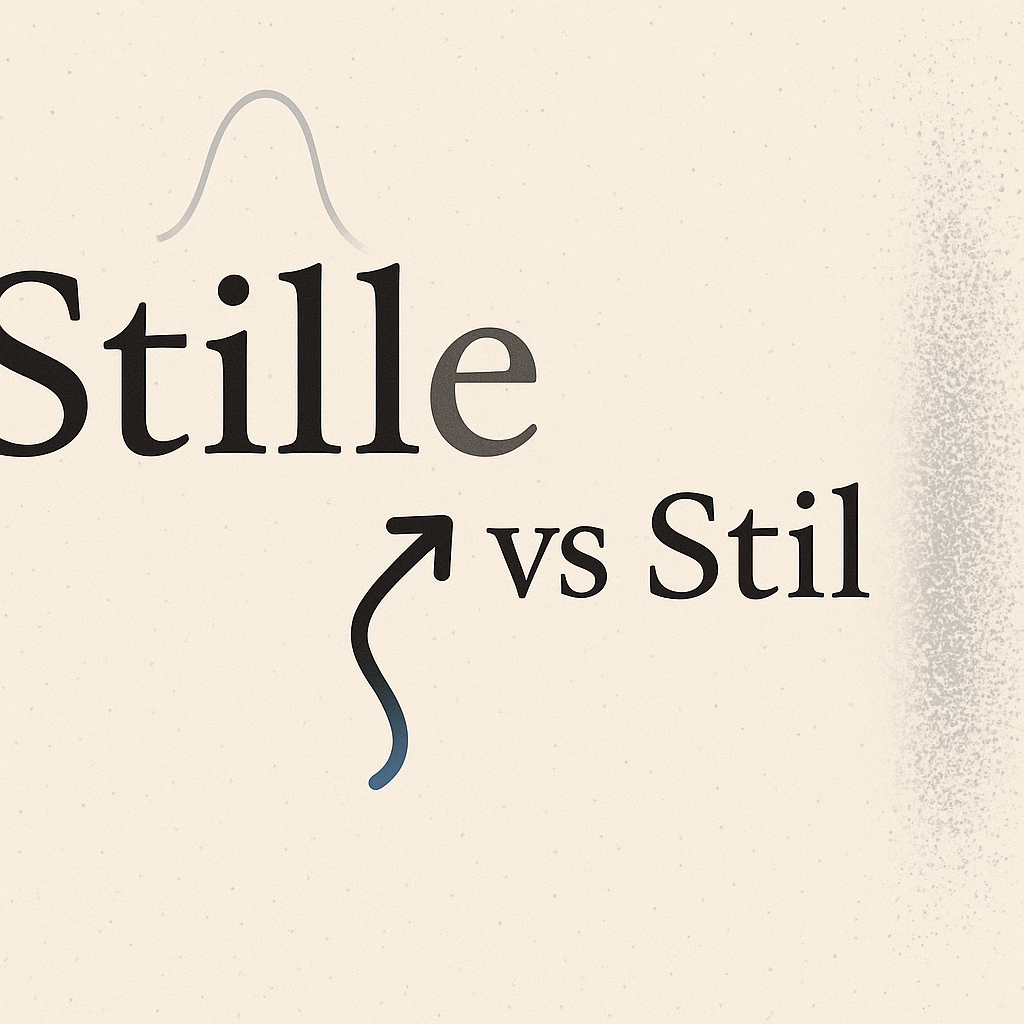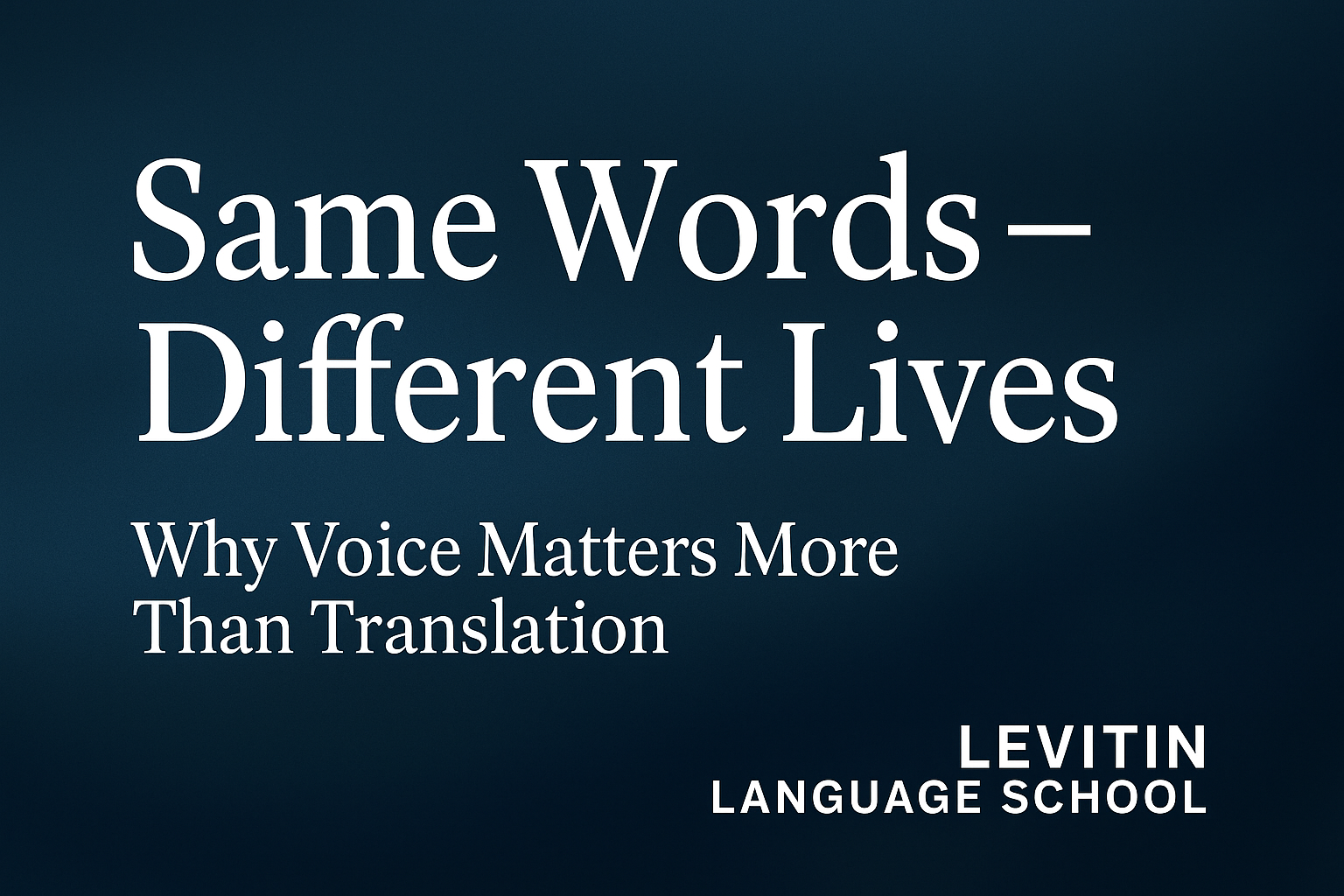规则背后的真正问题
许多学习者会问:"为什么德语句子中动词处于第二位?这是语法书中重复出现次数最多的规则之一,但却很少有清晰的解释。在本文中,我将为您提供的不是一系列规则,而是真正的解释:说明这种结构如何反映逻辑、节奏和意图。
核心:什么是第一位的?
在每个句子中,都有先行词。问题是 为什么.接下来呢?如果我们想真正理解德语的词序,就必须停止语言学家式的思维,开始交流者式的思维。
因此,让我们从最基本的开始。在每个句子中,都有一个 英雄-主角,即做某事或经历某事的人。还有一个 行动 动词 反对 (如果有),以及其他元素,如 时间, 地点或 背景.
但德国并不总是从英雄开始。它可以从 时间, 地点或发言者想要强调的任何其他内容。重要的是 行动永远是第二位的.
为什么?因为第二个位置是句子的心脏。
德语的真谛
在英语或俄语中,我们通常从主题开始:
- 她去上学了。
- Она идёт в школу.
在德语中,我们也可以这样开始:
- Sie geht zur Schule.
但我们也可以说
- 她现在在学校。 (今天她去上学了)。
- Zur Schule geht sie heute. (她今天要去上学)
动词仍然是第二位的。这就是逻辑。无论我们选择强调什么--今天、地点,甚至宾语--动词都是第二位的。 动词坚守阵地。
这不是机械的规则。它是一种交际决定。说话者选择要强调的内容,而动词则做出回应。
反转与强调
让我们准确一点。倒置 "一词经常被误用。反转 "与 "倒转 "是有区别的。 倒序 (动词在前,如问句)和 反序在这里,对象或上下文是第一位的。
例如
- 问题: 她现在在学校吗? (她今天上学吗?)--动词在前。
- 强调: 她现在在学校。 - 时间第一,动词第二。
德语利用这种灵活性,不是为了混淆学习者,而是为了让学习者能够更微妙地理解。
为何重要
太多的学习者死记硬背 10 条单词顺序规则,却不明白为什么会有这些规则。这不是我的方法。我教学生 分工思考而不是术语。
- 英雄 - 谁参与
- 行动 - 会发生什么
- 对象 - 影响范围
- 时间/地点 - 何时/何地
- 强调 - 这句话中最重要的是
"(《世界人权宣言》) 动词的第二位置 这反映了一个问题: 信息 和 行动.它创造了清晰度、节奏感和德国式逻辑。
总结:停止背诵。开始思考。
如果我们把语序当作一种工具,而不是规则,我们就能自由地表达,而不仅仅是重复。
在德语中,排在第二位的动词不是一种规律。它是一种节奏。一种心跳。句子开始活起来的那一刻。
© Tymur Levitin
创办人、主任和首席教育家 开始语言学校》,作者 Tymur Levitin / 列维廷语言学校
https://levitinlanguageschool.com/ | https://languagelearnings.com
本文是系列文章的一部分 "像语言一样思考"。 保留所有权利。知识产权受保护。
























